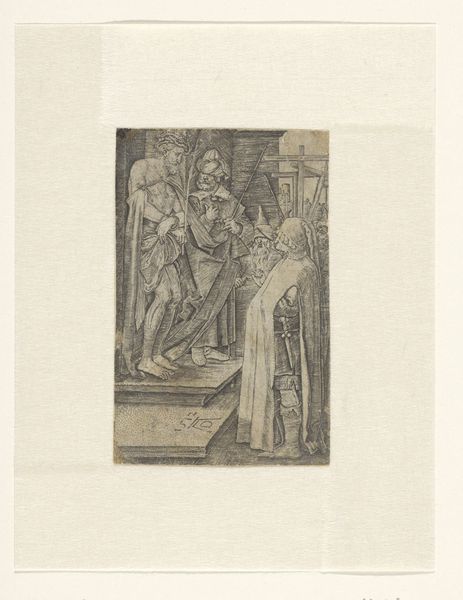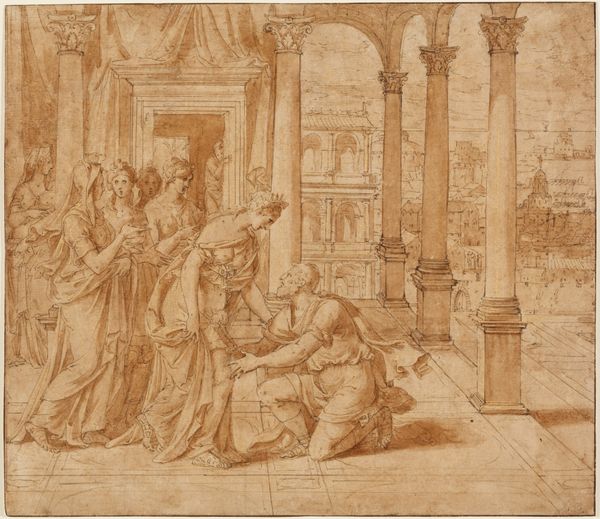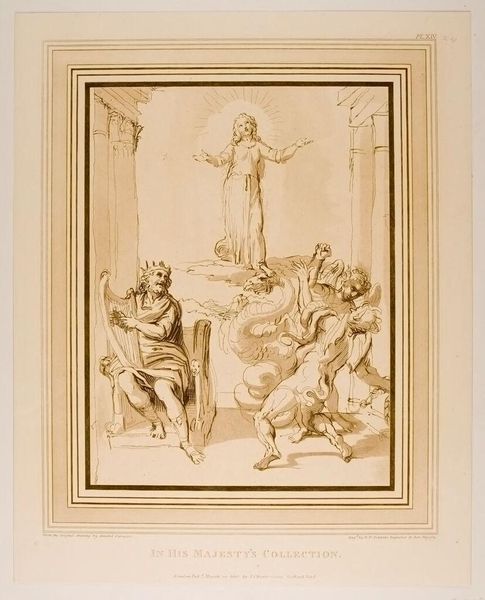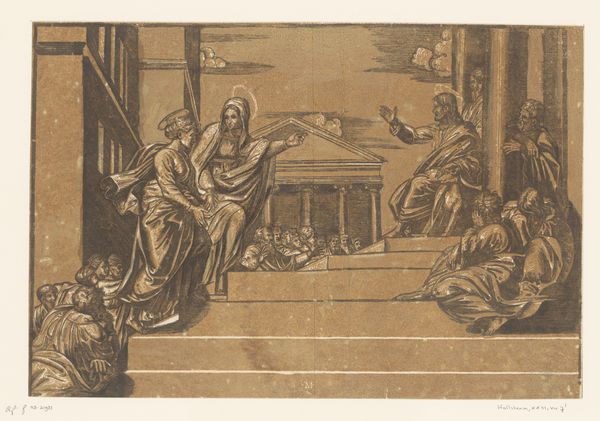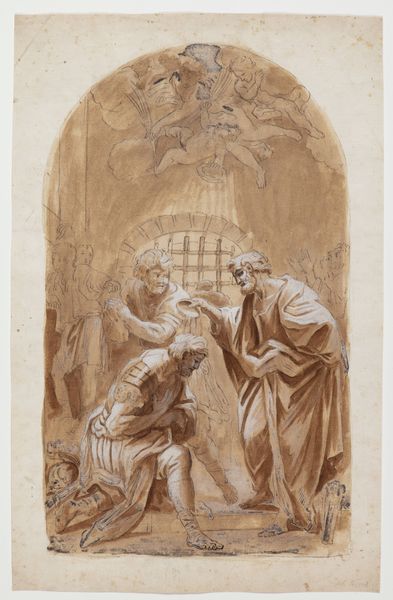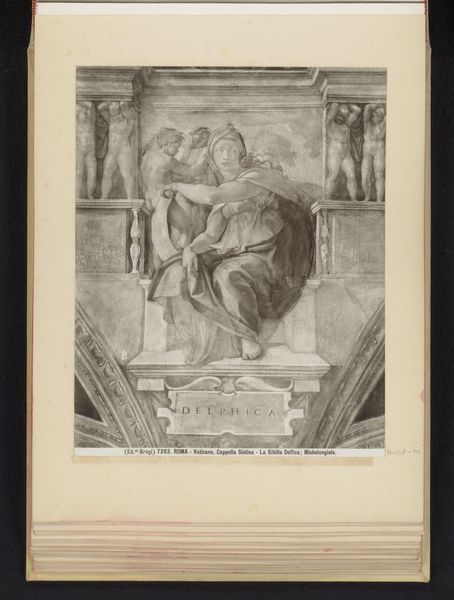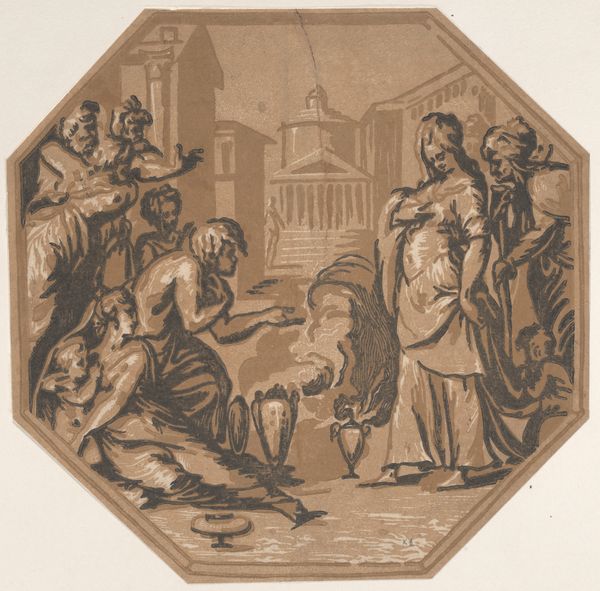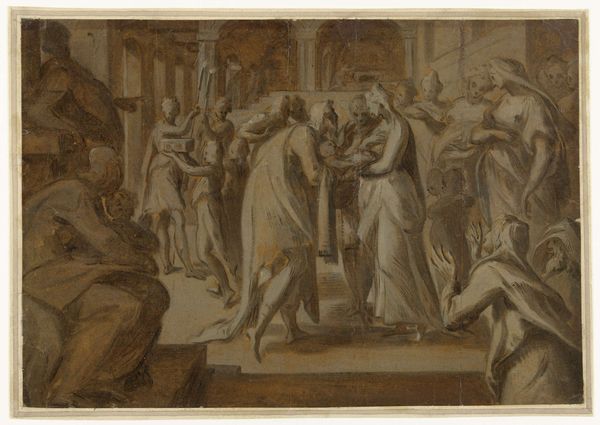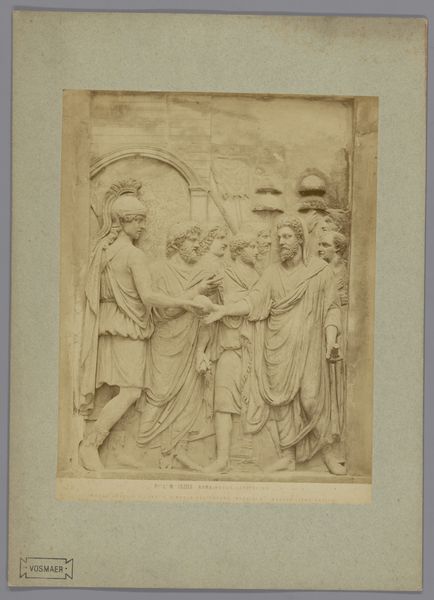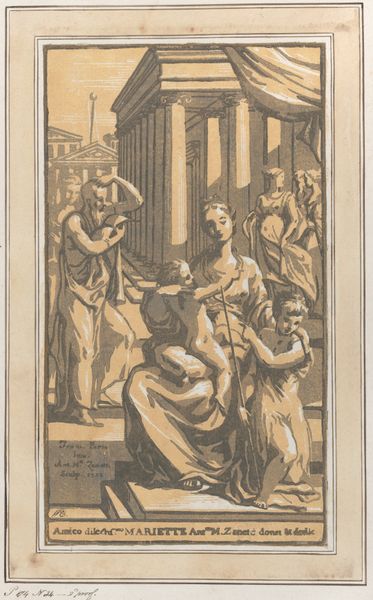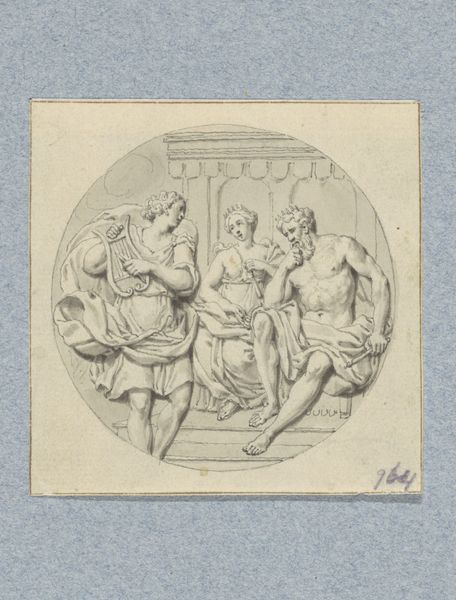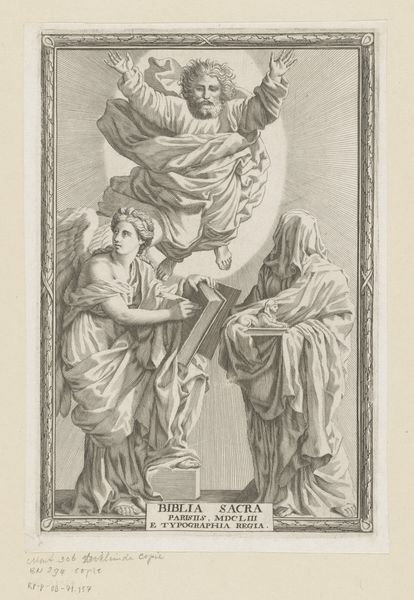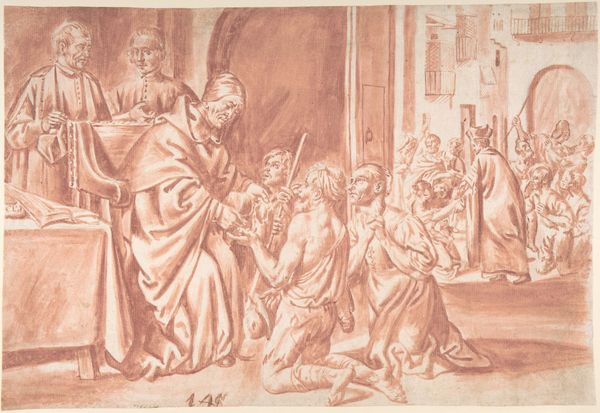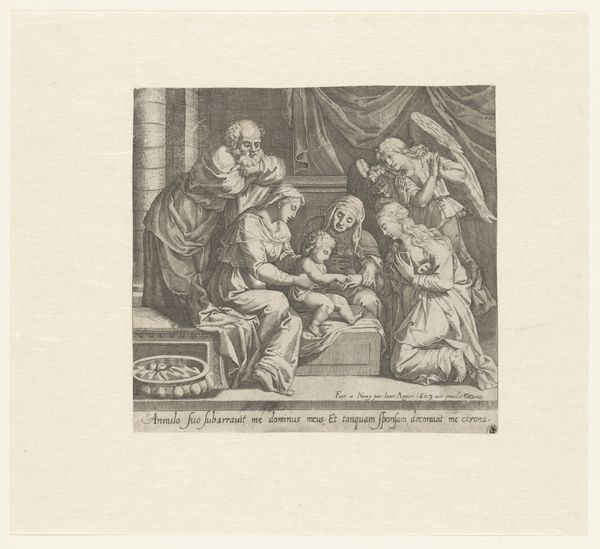
tempera, painting
#
portrait
#
allegory
#
tempera
#
painting
#
oil painting
#
italian-renaissance
#
italy
#
watercolor
Dimensions: 11 1/16 x 8 7/16 x 1/8 in. (28.1 x 21.43 x 0.32 cm) (panel)16 x 13 1/2 x 2 1/4 in. (40.64 x 34.29 x 5.72 cm) (outer frame)
Copyright: Public Domain
Filippino Lippi painted this panel, Two Muses (Erato and Melpomene), in Florence around 1500. The classical subject matter exemplifies the Renaissance revival of ancient Greek and Roman culture and philosophy. The artist seems to be commenting on the nature of artistic inspiration itself, but with an eye to the status of the arts in Florentine society. The Muses were mythological figures who inspired artists. Here, we see Erato, the Muse of lyric poetry, and Melpomene, the Muse of tragedy, in a moment of collaboration or contemplation. The sculpture in the background symbolizes the idea of classical inspiration. The pedestal on which the women lean may have specific institutional associations. It looks like an altar, but with the inscription 'DESIDERIO'. Was this painting commissioned for a particular academy or philosophical association? Was it a gift? Such questions can be answered by art historians who look not just at the painting itself, but also at the historical and social context in which it was made. In this way we can come to a better understanding of the artwork's meaning and how it reflects the world around it.
Comments
minneapolisinstituteofart almost 2 years ago
⋮
In Greek mythology, the Muses were the nine goddesses of creative inspiration in the arts, each having her own sphere of influence. One may be Thalia, the Muse of comedy and pastoral poetry, usually shown with a mask and a musical instrument, while the other is likely Melpomene, the Muse of Tragedy, typically shown with a mask and small horn. Thalia plays a lyre placed on a small altar dedicated to Deo. Max., possibly the sun god, Apollo. This composition is based on a fresco in the Strozzi Chapel in the church of Santa Maria Novella, painted between 1493/94 and 1502 by Filippino Lippi, a leading Florentine painter. It has been attributed to an unknown member of Filippino's workshop, who is called "Master of Memphis," named for another important work attributed to him, "Saint Francis in Glory" now in Memphis (Brooks Museum). We are grateful to Jonathan Nelson for clarifying the attribution and date of this work.
Join the conversation
Join millions of artists and users on Artera today and experience the ultimate creative platform.
